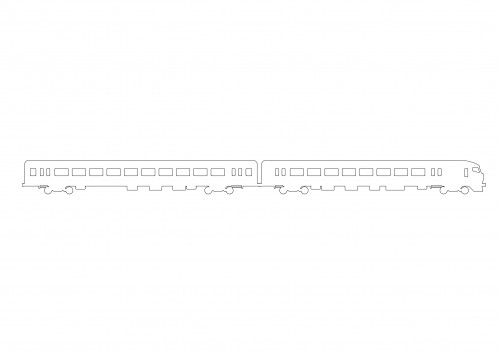
DOWNLOAD
Transportation
In rail transport, a train is a series of connected vehicles that run along a railway track and transport people or freight. The word train comes from the Old French trahiner, derived from the Latin trahere meaning "to pull, to draw". Trains are typically pulled or pushed by locomotives (often known simply as "engines"), though some are self-propelled, such as multiple units. Passengers and cargo are carried in railroad cars, also known as wagons. Trains are designed to a certain gauge, or distance between rails. Most trains operate on steel tracks with steel wheels, which allows low friction and makes them more efficient than other forms of transport. Trains have their roots in wagonways, which used railway tracks and were powered by horses or pulled by cables. Following the invention of the steam locomotive in the United Kingdom in the early 1800s, trains rapidly spread around the world, allowing freight and passengers to move over land faster and cheaper than ever possible before. Rapid transit and trams were first built in the late 1800s to transport large numbers of people in and around cities. In the mid–20th century, diesel and electric locomotives replaced steam as the means of motive power. Following the development of more flexible cars and faster airplanes, trains declined in importance and market share, and many train lines were abandoned. The spread of buses led to the closure of many rapid transit and tram systems during this time as well. Since the 1970s, governments, environmentalists, and train advocates have promoted increased use of trains due to their greater fuel efficiency and lower greenhouse gas emissions compared to other modes of land transport. High-speed rail, first built in the 1960s, has proven competitive with cars and planes over short to medium distances. Commuter rail has grown in importance since the 1970s as an alternative to congested highways and a means to promote development, as has light rail in the 21st century. Freight trains remain important for the transport of bulk commodities such as coal and grain, as well as being a means of reducing road traffic congestion by freight trucks. While conventional trains operate on relatively flat tracks with two rails, a number of specialized trains exist which are significantly different in their mode of operation. Monorails operate on a single rail, while funiculars and rack railways are uniquely designed to traverse steep slopes. Experimental trains such as maglevs, which use magnetic levitation to float above a guideway, are under development in the 2020s and offer higher speeds than even the fastest conventional trains. Development of trains which use alternative fuels such as natural gas and hydrogen is another 21st century development.
Tags:
train , rail , transport , transportation , vehicle , connected , connet , railway , way , track , people , public , private , locomotive , engine
FROM THIS CATEGORY
4399
FREE FILES
FOR DOWNLOADING
We’ll design for you new CAD blocks, for free!
Because at Freecads, we’ve built a world that works,
just the way it should!